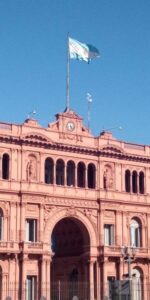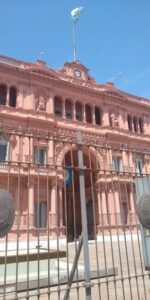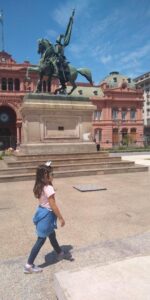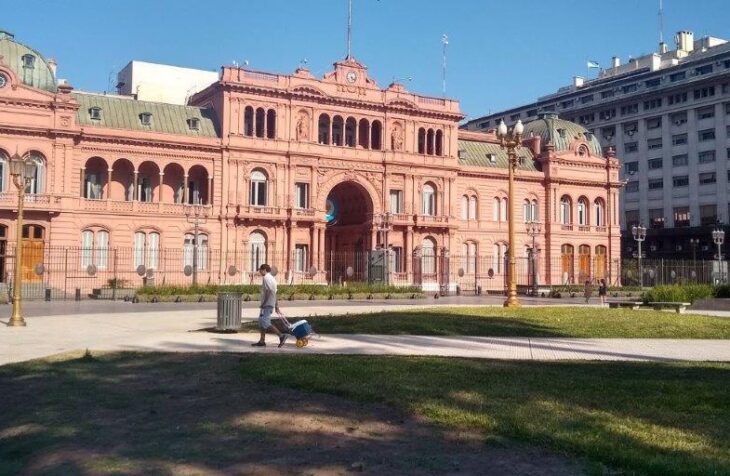Casada Rosa (The Pink House) – The most famous house in Argentina!
The Casada Rosa (the Pink House) is undoubtedly the most famous house in Argentina.
Situated at the far end of 9 de Julio Avenue this iconic residence dominates the Plaza de Mayo. Also known as the Casa de Gobierno (Government House) is the official workplace of the President.
The site on and around what is now the pink house has seen many changes. The current site of the building once sat on the edge of the city’s river. This has now been contained in nearby Puerto Madero (well worth a visit). The site started life as a fortress and then under the Spanish became a castle under the Spanish Viceroy. After the exit of the Spanish the area became the gateway for thousands of European immigrants who passed through what became the customs house. In 1860 the Argentinian President Bartolome Mitre constructed an annex to the customs house which consequently became the center for the executive administration.
It was up to Mitre’s successor Domingo Sarmiento to initiate what would be the buildings distinct pink color. So there are a couple of theories. One of the slightly more obscure reasons is this was supposedly done my mixing cows blood with white paint. This rather unsavory mixture would protect the structure from the humid summer heat of the city. The more reasonable explanation boils down to Argentinian politics. The more reasonable explanation boils down to politics. The pink color mixes the white of the Liberal Party and the red of the Radicals. Sarmiento saw this as a way to diffuse political tensions between the two parties. He wanted it to symbolize harmony.
One other quirky fact about the president’s office is the chair. It pays homage to the first ever President of the country Bernandina Rivadavia and is known as the “Seat of Rivadavia”. Technically it’s not the actual chair but it’s a nice tribute.
The house has one other very famous claim to fame and it’s not certainly not Madonna. The spiritual leader of Argentina, Eva Peron often addressed thousands from the first-floor balcony. Her speeches inspired crowds of Peronist known as the shirtless ones due to their impoverished state. No doubt the movie created with Madonna and the song “Don’t cry for me Argentina” immortalized this image around the world. Just a word here. Many Argentinians consider the movie far removed from reality. Most in contention is the supposed appearance of Che Guevara in her life and portrayed in the movie. Total fabrication, although he did once write her a letter asking for a new car.
The building or rather the Plaza de Mayo where the building sits has seen its fair share of protests over the years. I was lucky to be there on International woman’s day which was not only colorful but saw crowds of indigenous woman protesting for equal rights. Probably some of the most famous protests took place during the 1976-83 military regime when mother (known as “madres”) came in pairs to protest the disappearance of their children. More information on the post “Madres”
Unfortunately the corona virus brought my trip to Buenos Aires to an abrupt end. This meant I could not enjoy the museum which is situated to the left of the building. Click here for details. You can also take a guided tour of the presidential offices, but this proved somewhat difficult when I tried to book.
The closed metro stations are Bolivar on the H line and Catedral on the D line.

 Tiny Teddy
Tiny Teddy